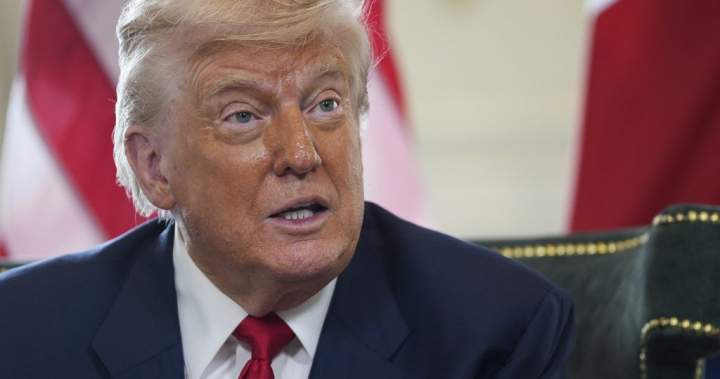In a dramatic escalation of trade tensions, former President Donald Trump has announced plans to impose a sweeping 35 percent tariff on all Canadian imports if he returns to office, sending shockwaves through North American economic corridors. The proclamation, made during a campaign event in Michigan, represents one of the most aggressive trade positions against Canada in recent history and signals a potential return to protectionist policies that defined his previous administration.
“On day one, I will sign an executive order to impose a 35 percent tariff on every single product that comes across our border from Mexico, from Canada, from China,” Trump declared to supporters. The announcement comes amid growing frustration from the Republican presidential candidate about what he perceives as unfair trade practices from America’s closest neighbors.
The proposed tariffs would have profound implications for the deeply integrated North American economy. Canada remains the United States’ largest trading partner, with bilateral trade exceeding $900 billion annually. Key Canadian exports to the U.S. include energy products, vehicles, machinery, and agricultural goods—sectors that would face significant disruption under such punitive measures.
Economic analysts at the C.D. Howe Institute estimate that a 35 percent tariff could reduce Canadian GDP by approximately 1.5 to 2.2 percent, potentially triggering a recession. “This isn’t just harmful to Canada—it’s a self-inflicted wound on the American economy,” noted Daniel Schwanen, Vice-President of Research at the institute. “American consumers would face higher prices on everything from automobiles to lumber, while manufacturing supply chains would be severely disrupted.”
The Trudeau government has responded cautiously to Trump’s remarks. Deputy Prime Minister Chrystia Freeland emphasized Canada’s position as a reliable trading partner: “Canada has always been and will continue to be a steadfast ally and fair trading partner with the United States. Our integrated supply chains benefit workers and businesses on both sides of the border.”
Canadian officials are reportedly developing contingency plans should Trump return to office and implement these tariffs. According to sources familiar with the discussions, these plans include potential retaliatory measures targeting politically sensitive American exports and pursuing legal challenges through World Trade Organization mechanisms.
This isn’t the first time Trump has targeted Canadian trade. During his previous administration, he imposed tariffs on Canadian steel and aluminum under the pretext of national security concerns, leading to retaliatory Canadian tariffs on American goods. The dispute was eventually resolved through renegotiation of the North American Free Trade Agreement, resulting in the current United States-Mexico-Canada Agreement (USMCA).
Business leaders from both countries have expressed alarm at the prospect of renewed trade hostilities. “These proposed tariffs would devastate integrated supply chains that have been built over decades,” said Goldy Hyder, President of the Business Council of Canada. “They would harm workers and consumers on both sides of the border while making North America less competitive globally.”
The timing of Trump’s announcement coincides with ongoing disputes over softwood lumber, dairy products, and critical minerals—areas where bilateral tensions have persisted despite the USMCA framework. Some analysts suggest the tariff threat may be a negotiating tactic to extract concessions on these outstanding issues.
As November’s presidential election approaches, Trump’s hardline stance on trade has become a central campaign theme, particularly in manufacturing-heavy swing states like Michigan, where he made the announcement. Whether the tariff proposal represents a concrete policy intention or campaign rhetoric remains unclear, but its mere suggestion has already intensified uncertainty in business planning and international relations.
The potential economic fallout extends beyond bilateral trade. Economists warn that such tariffs could accelerate inflationary pressures in the United States, potentially forcing the Federal Reserve to maintain higher interest rates for longer. This presents a stark contrast to current efforts to cool inflation without triggering a recession.
As this trade standoff unfolds, a fundamental question emerges: Can North America maintain its economic competitiveness in an increasingly challenging global environment if its largest economies engage in protracted trade disputes with each other?


















